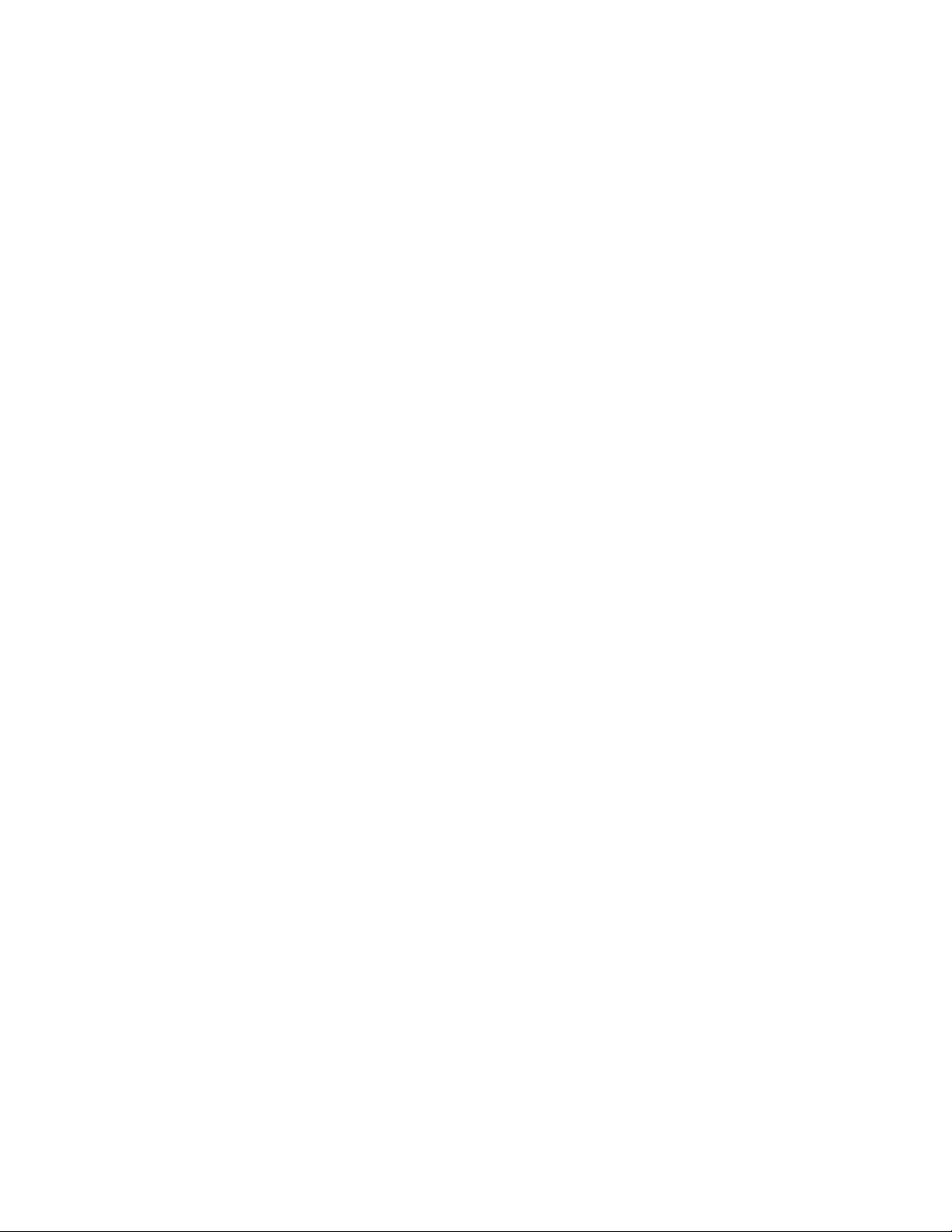

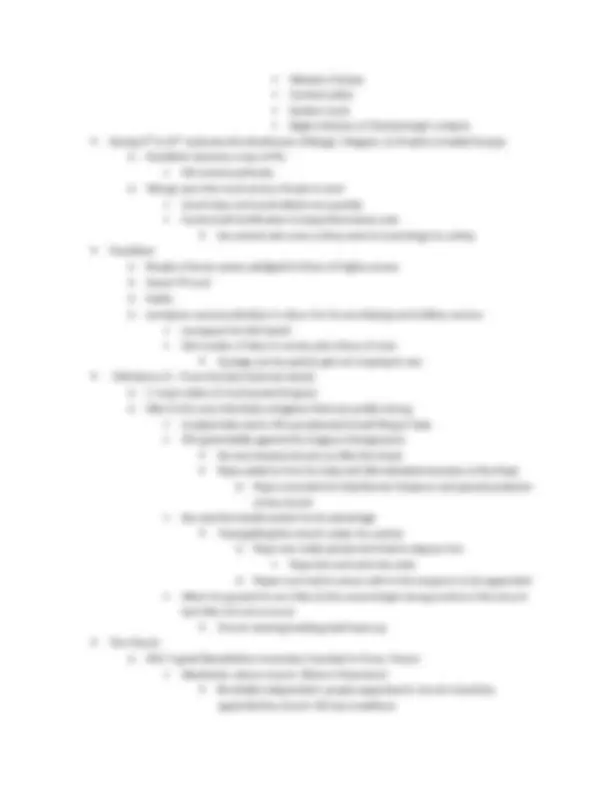
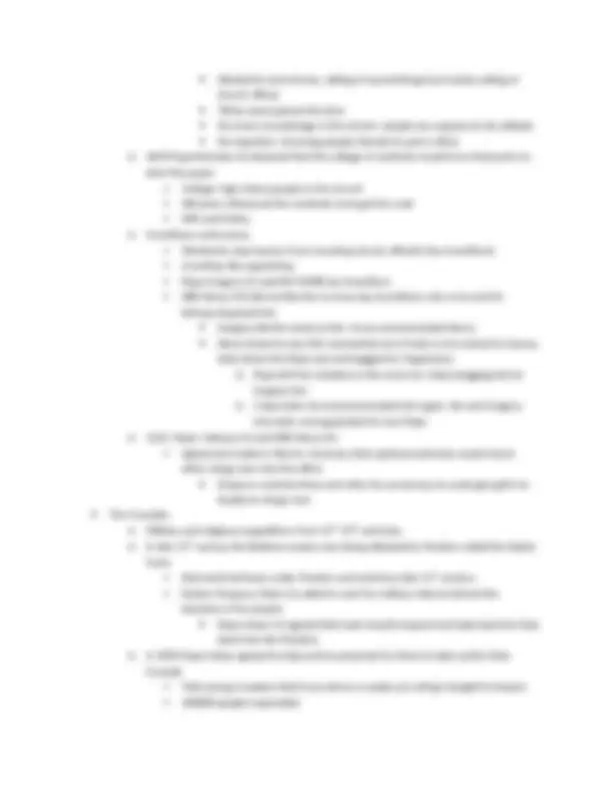
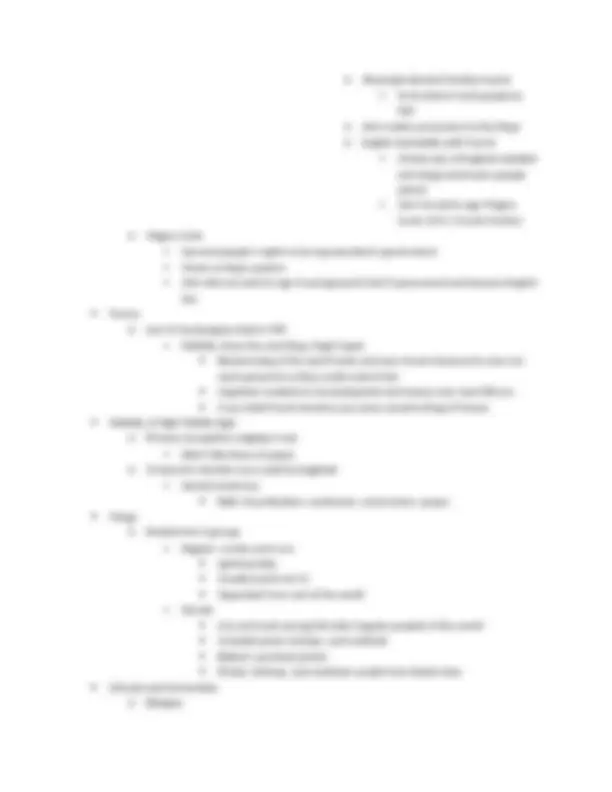
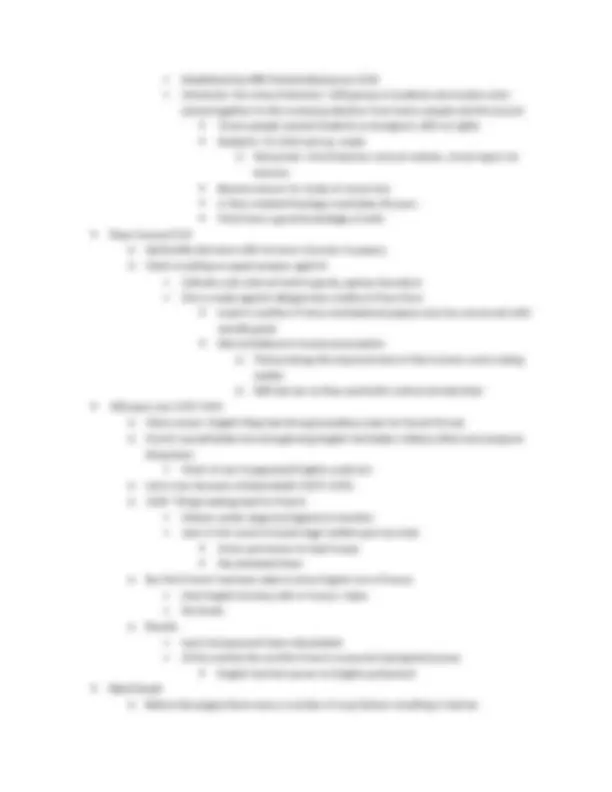
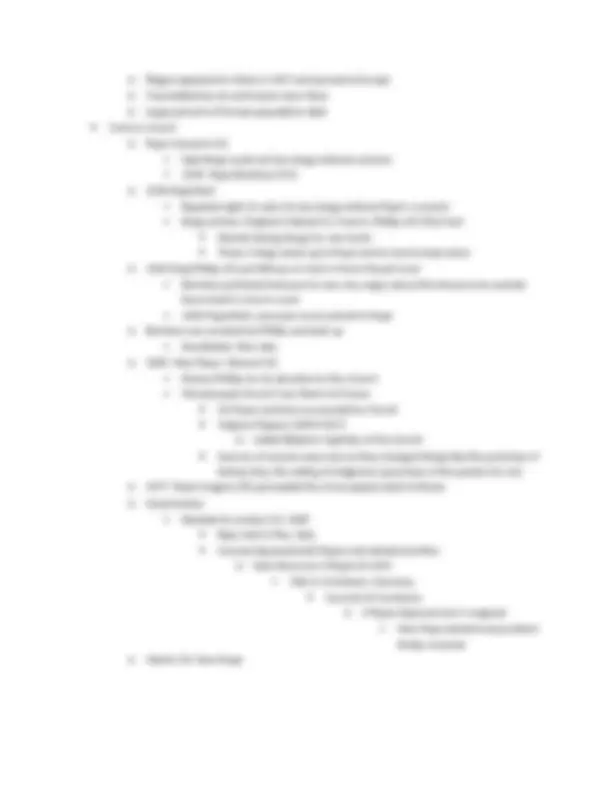


Study with the several resources on Docsity

Earn points by helping other students or get them with a premium plan


Prepare for your exams
Study with the several resources on Docsity

Earn points to download
Earn points by helping other students or get them with a premium plan
Community
Ask the community for help and clear up your study doubts
Discover the best universities in your country according to Docsity users
Free resources
Download our free guides on studying techniques, anxiety management strategies, and thesis advice from Docsity tutors
Final Notes Material Type: Notes; Professor: Niehaus; Class: WORLD HISTORY I; Subject: History; University: University of Central Arkansas; Term: Fall 2010;
Typology: Study notes
1 / 10

This page cannot be seen from the preview
Don't miss anything!







World History 1- Test 4/Final Study Guide Ch. Monasticism- 4th^ century: end of 300’s a.d. (substitute for martyrdom) o Monks Laymen: 1st^ Monks Part of the layity of the church (the community) Ordinary people Hermits withdrew from society many lived in Egypt/Siberia o Became a visible movement in the church around 300 a.d. o Practiced extreme forms of humiliation and self mutilation Some lived in cages and wore very heavy weights around their necks Some did exercises over and over again Some lived in high pillars o Communal Monasticism Living in small groups o Founder of monasticism: Anthony of Egypt (a hermit) o Basil the great was a hermit monk that made communal monasticism popular in the East Became known as little cities of God o Benedict made communal monasticism popular in the West Wrote RULE The comprehensive plan about how to live Specifies what you should do every hours of everyday Monks who followed his rule are Benedictine monks o Believed in chastity, poverty, & obedience o Abbots Monastery was directed by Abbots Absolute control Strict discipline Middle Ages (476-1500) o Fall of the Roman Empire – Dawn of the Renaissance o Early Middle Ages (476-1000) Used to be called dark ages Merovingian & Carolingian Dynasties o High Middle Ages (1000-1500 late) Plague
Rise of universities Crisis in the Church Church Politics o West- Bishops (leaders) o East- Patriarchs (leaders) o Pope wanted to make sure church in Rome remained in Rome Started establishing supremacy or primacy Called himself Pontifex Maximus (Supreme Priest) o Rival between East and West o Clovis, a warrior chiefdom, converted to Christianity From Frank Established a kingdom of Franks- Merovingian Kings Delegated A LOT “do nothing kings” Mayor of Palace appointed by nobility o At 1st^ it wasn’t but it became hereditary o Pepin (I) had son- Pepin (II) He was ruling the entire Kingdom Very successful war leader Had a sons: Most important-Charles He would grant fiefs to nobility in return for military service o Fief-usually land 732- he fought a battle of tours o Muslims force o He was a Christian and won the battle o He was called: the Savior of Christianity, Charles Martel, or Charles the Hammer Had a son: Pepin (III) or Pepin the Short o Church appealed to him for military aid & he replied: Do you think whoever rules in fact should also rule in name? The church had to help Pepin become King of the Franks He gave the church land surrounding Rome: called Donation of Pepin o Pepin had a son: Charlemange (768-
Charlemange
Western-Charles Central-Lothar Eastern-Louis Begins division of Charlemange’s empire During 9th^ & 10th^ centuries the Northsmen (Vikings), Magyars, & Muslims invaded Europe o Feudalism became a way of life NO central authority o Vikings were the most serious threat in west Good ships and could attack very quickly Franks built fortification to keep themselves safe No central safe zone so they went to local kings for safety Feudalism o People of lesser power pledged to those of higher power o Vassal Lord o Fealty o Lord gives vassal protection in return for his worshiping and military service Lord gave him fief (land) Set number of days in service plus times of crisis Scutage can be paid to get out of going to war 918-Henry (I) – From the East (German lands) o 5 major dukes (5 most powerful guys) o Otto (I) (his son) inherited a kingdom that was pretty strong Invaded Italy and in 951 proclaimed himself King of Italy 955 great battle against the magyurs (Hungarians) He won became known as Otto the Great Pope called on him for help and Otto defeated enemies of the Pope o Pope crowned him Holy Roman Emperor and special protector of the church He used the feudal system to his advantage Tried getting the church under his control o Pope was really pissed and tried to depose him Pope lost and sent into exile o Popes now had to swear oath to the emperor to be appointed When he passed his son Otto (II) the second kept strong control of the church but Otto (III) not so much Church starting building itself back up The Church o 910- A great Benedictine monastery founded in Cluny, France Wanted to reform church- Reform Movement Be totally independent- people appointed in church should be appointed by church- NO lay investiture
Wanted to end simony: selling of sacred things but mainly selling of church offices Tithes were paid at this time No more concubinage in the church- people are suppose to be celibate No nepotism- choosing people (family) to put in office o 1059 Pope Nicholas (II) declared that the college of cardinals would from that point on elect the popes College- high status people in the church Whoever influenced the cardinals most got the vote Still used today o Investiture controversy Wanted to stop laymen from investing church officials (lay investiture) Investing: like appointing Pope Gragory (II) said NO MORE lay investiture HRE Henry (IV) did not like the no more lay investiture rule so he and his bishops deposed him Gregory did the same to him- he ex-communicated Henry Henry knew he was SOL (somewhat out of luck) so he rushed to Conosa, Italy where the Pope was and begged for forgiveness o Pope left him shoeless in the snow for 3 days begging but he forgave him o 5 days later he excommunicated him again. He sent Gregory into exile and appointed his own Pope o 1122- Pope: Calixyus (II) and HRE Henry (V) Agreement made in Worms, Germany that spiritual authority would invest other clergy men into the office Emperor could be there and after the ceremony he could give gifts for loyalty to clergy men The Crusades o Military and religious expeditions from 11th-13th^ centuries o In late 11th^ century the Bizitene empire was being attacked by Muslims called the Seljuk Turks Holy land had been under Muslim control before late 11th^ century Eastern Emperor Alexis (I) called to west for military help to defend the boarders of his empire Pope Urban (II) agreed that west should respond and take back the Holy land from the Muslims o In 1095 Pope Urban agreed to help and he preached for them to take up this Holy Crusade Told young crusaders that if you die on crusade you will go straight to heaven 100000 people responded
B of Hastings – 1099 William invaded and took over and won battle for throne of England He had to work to gain control over 20 yrs. Considered every land holder to be his vassal Kept tax system but did a census of all land and people and what they had o Called domesday book by people of England After William died Henry (I) became king o Henry had son but he drowned and there was a civil war until his grandson was of age Daughter- Matilda- 2nd^ marriage to Jeffery of Anjour in 1128 she was 25 and Jeff- 14 o 5 years later they had Henry (II) Had loss of territory – Normandy, Anjou, Aquitaine, England Married Eleanor of Aquitaine while the count of Anjou o Had 8 kids- 5 sons and 3 daughters o Eleanor powerful woman Strong willed She rebelled because he cheated on her so much Got in trouble with Catholic Church Made Catholic clergy in England subject to civil court instead of Catholic Church Court o Constitution of Claradenon Arch Bishop of Canterbury-Thomas Becket o Not super strict but this WAS NOT tolerable to him o Murdered in church by Henry’s men because of quarrels- Had to make compromise with the Pope In 1209 John was King of England Pope Innocent (III) o Powerful o Made papacy into great secular power They quarreled over next arch bishop of Canterbury Pope excommunicated King John and put country under interdict
o All people denied Christian burial So he kind of sent people to hell o John made concessions to the Pope o English had battle with French Aristocracy of England rebelled and clergy and towns people joined John forced to sign Magna Carta 1215 (*Great Charter) o Magna Carta Secured people’s rights to be represented in government Check on king’s powers John did not want to sign it and ignored it but it persevered and became English law France o Last of Carolengians died in 987 Nobility chose the next King- Hugh Capet Became king of the west Franks and was chosen because he was not most powerful so they could control him Capetians worked on increasing land and money over next 200 yrs. If you held French territory you were vassal to King of France Nobility of High Middle Ages o Primary occupation-waging in war Didn’t like times of peace o To become member you could be knighted Sacred ceremony Bath of purification, confession, communion, prayer Clergy o Divided into 2 groups Regular: monks and nuns Spiritual elite Usually had to be 21 Separated from rest of the world Secular Live and work among the laity (regular people) of the world Included priest, bishops, and cardinals Bottom: perished priests Priests, bishops, and cardinals usually from Nobel class Schools and Universities o Bologna
o Plague appeared in Sicily in 1347 and spread to Europe o Transmitted by rat and human born fleas o Large percent of Europe population died Crisis in church o Pope Innocent (III) Said Kings could not tax clergy without consent 1294- Pope Boniface (VIII) o 1296 Papal Bull Rejected right of rulers to tax clergy without Pope’s consent Kings at time: England- Edward (I), France- Phillip (IV) (The Fair) Heavily taxing clergy for war funds These 2 kings stood up to Pope and he had to back down o 1301 King Phillip (IV) put Bishop on trial in French Royal Court Boniface protested because he was very angry about this because he wanted them tried in church court 1301 Papal Bull- everyone must submit to Pope o Boniface was arrested by Phillip and beat up Humiliated- then dies o 1305- New Pope: Clement (V) Praises Phillip for his devotion to the church Moved papal church from Rome to France On Pope Land but surrounded by French Avignon Papacy (1309-1317) o Called Babylon Captivity of the church Sources of income were lost so they changed things like the purchase of bishop ship, the selling of dulgences (purchase of the pardon for sin) o 1377- Pope Gregory (XI) persuaded the move papacy back to Rome o Great Schism Decided to resolve it in 1409 Reps met in Pisa, Italy Counsel deposed both Popes and elected another o Now there are 3 Popes til 1414 Met in Constance, Germany Counsel of Constance o 2 Popes deposed and 1 resigned New Pope elected and problem finally resolved o Martin (V)- New Pope